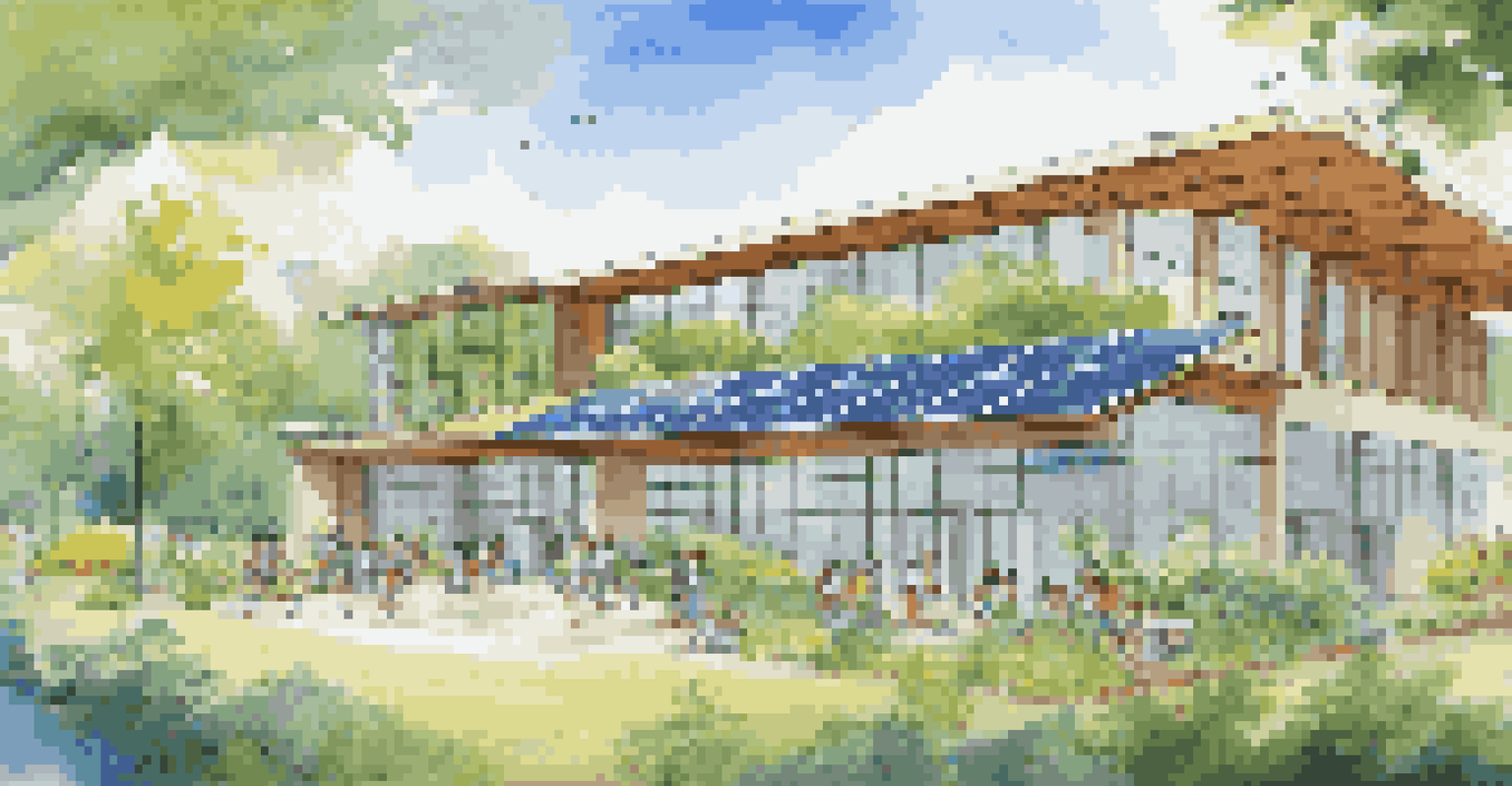The Benefits of Investing in Educational Infrastructure

Improved Learning Environments Boost Student Engagement
Investing in educational infrastructure creates modern classrooms that foster a more engaging learning experience. When students are in well-designed spaces, they are more likely to participate actively in lessons. For example, natural light and comfortable seating can significantly improve focus and enthusiasm among learners.
Education is the most powerful weapon which you can use to change the world.
Moreover, technology integration in these environments can enhance learning further. Interactive whiteboards and access to digital resources enable students to collaborate and explore topics more dynamically. This not only maintains their interest but also prepares them for a tech-savvy world.
Overall, when students feel comfortable and engaged, their performance tends to improve. This creates a ripple effect, encouraging them to take more initiative in their studies and develop a love for learning that lasts a lifetime.
Enhanced Accessibility for All Students
One of the core benefits of investing in educational infrastructure is increased accessibility for students of all abilities. Modern buildings can be designed to accommodate those with disabilities, ensuring everyone has the opportunity to learn in a supportive environment. This commitment to inclusivity fosters a sense of belonging among all students.

For instance, ramps, elevators, and accessible restrooms are essential features that make a school more welcoming. When physical barriers are removed, students can navigate their learning spaces freely, promoting independence and confidence. This is crucial for their overall development.
Engaging Spaces Enhance Learning
Modern classrooms designed with comfort and technology boost student participation and enthusiasm.
Furthermore, inclusive infrastructure sends a powerful message about equity in education. It shows that every student deserves a chance to succeed, regardless of their background or challenges they face.
Community Engagement and Support Through Infrastructure
Investing in educational infrastructure often leads to stronger ties between schools and their communities. When schools are built or renovated, they become hubs for local events and activities. This fosters a sense of pride and ownership among community members, who feel more invested in the success of their local educational institutions.
The future belongs to those who believe in the beauty of their dreams.
For example, modern sports facilities or auditoriums can host community gatherings, performances, and sporting events. These shared spaces not only enrich the educational experience but also create a platform for parents and residents to engage with each other and the school staff.
As a result, this kind of community involvement can lead to additional support for schools, whether through volunteer efforts, fundraising, or even providing resources. A collaborative relationship between schools and communities ultimately benefits students and enhances their educational experience.
Sustainable Infrastructure: A Step Towards Eco-Friendly Education
Investing in educational infrastructure also opens the door to sustainable building practices. Schools designed with eco-friendly materials and energy-efficient systems not only reduce their carbon footprint but also teach students the importance of environmental stewardship. Incorporating green technology can inspire the next generation to think critically about sustainability.
For instance, solar panels and rainwater harvesting systems can be integrated into new school designs. These features not only lower operating costs but also serve as real-life examples for students learning about science and environmental studies. By seeing these practices in action, students can understand the positive impact of sustainability.
Accessibility Promotes Inclusivity
Investing in infrastructure ensures all students, regardless of ability, have equal opportunities to succeed.
Ultimately, sustainable educational infrastructure benefits everyone. It creates healthier learning environments and aligns with broader initiatives to combat climate change, ensuring a better planet for future generations.
Attracting and Retaining Quality Educators
Another significant advantage of investing in educational infrastructure is the ability to attract and retain high-quality teachers. Modern facilities equipped with the latest resources can make a school an appealing place to work. Teachers are more likely to feel supported and valued when they have access to the tools they need to succeed.
For example, well-equipped science labs or art studios can enhance a teacher's ability to deliver engaging lessons. When educators have the right environment to work in, they can focus more on teaching and less on overcoming logistical challenges. This can lead to improved job satisfaction and lower turnover rates.
In turn, having experienced and passionate educators positively impacts student learning outcomes. A stable teaching staff fosters continuity and builds strong relationships, contributing to an overall enriching educational experience for students.
Economic Growth through Educational Investments
Investing in educational infrastructure can have a profound impact on local economies. When schools are built or upgraded, they create jobs not only during construction but also in ongoing maintenance and staffing. This influx of employment opportunities can stimulate local economies and contribute to community development.
Moreover, well-resourced schools attract families to the area, increasing property values and local business revenue. Communities with strong educational facilities often see a rise in population as parents seek the best opportunities for their children. This cycle of growth fosters a thriving community atmosphere.
Community Ties Strengthen Education
Well-designed schools foster community engagement, leading to increased support and resources for local education.
In essence, investing in educational infrastructure is not just about improving schools; it's about boosting the economic vitality of the entire area. As education improves, so do the prospects for local businesses and the community as a whole.
Long-Term Benefits for Student Success and Lifelong Learning
Ultimately, the investment in educational infrastructure yields long-term benefits that extend far beyond the classroom. Students who learn in well-equipped environments are more likely to succeed academically, which can lead to better career opportunities in the future. This creates a cycle of success that can uplift entire communities.
Additionally, modern educational infrastructure supports lifelong learning. As students engage with technology and innovative teaching methods, they develop critical thinking and problem-solving skills essential for navigating an ever-changing world. These skills are invaluable in both personal and professional realms.

In conclusion, investing in educational infrastructure is an investment in the future. By creating spaces that inspire and facilitate learning, we equip students not just for tests, but for life.